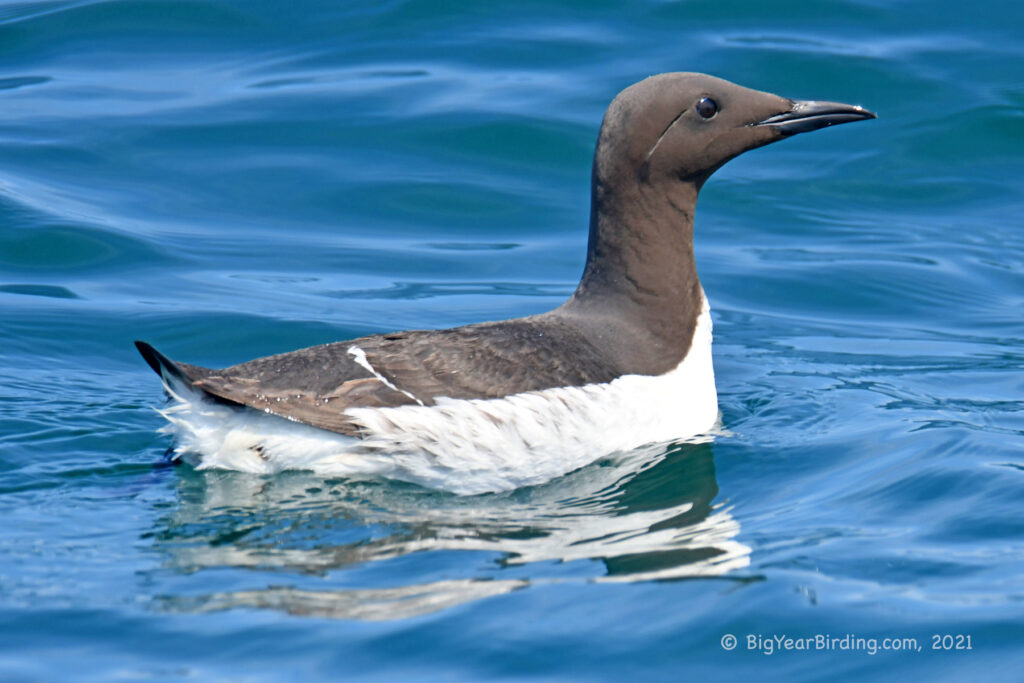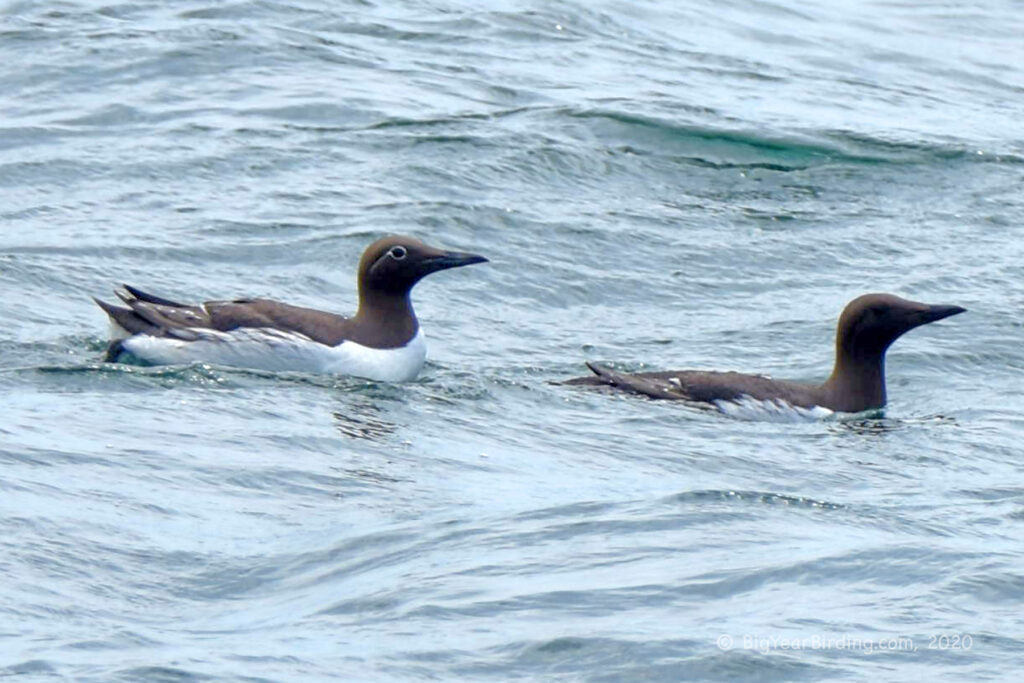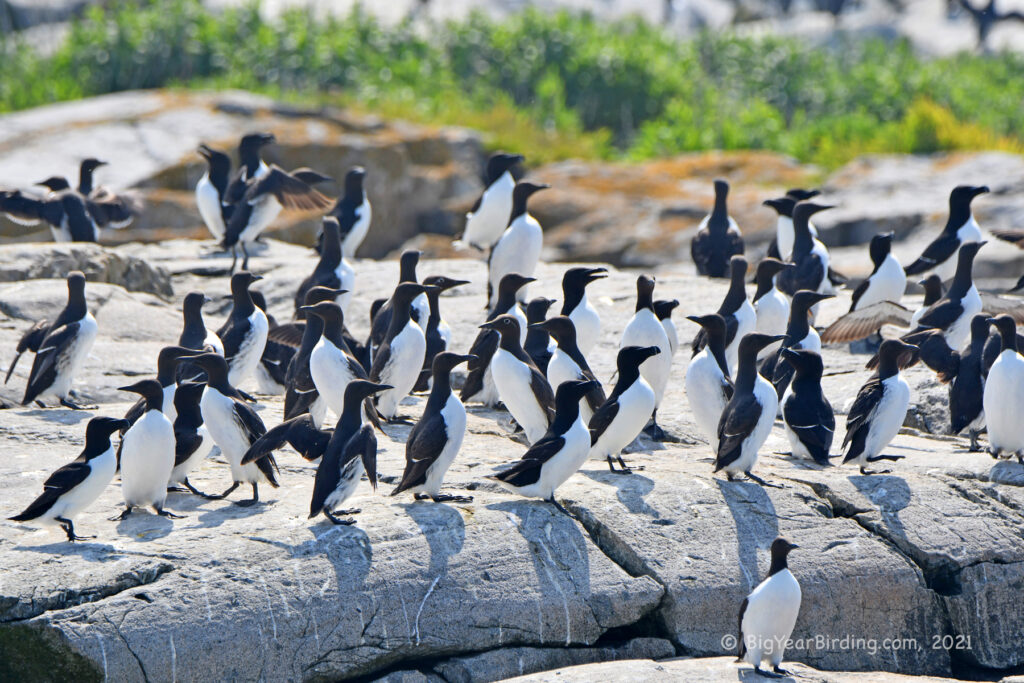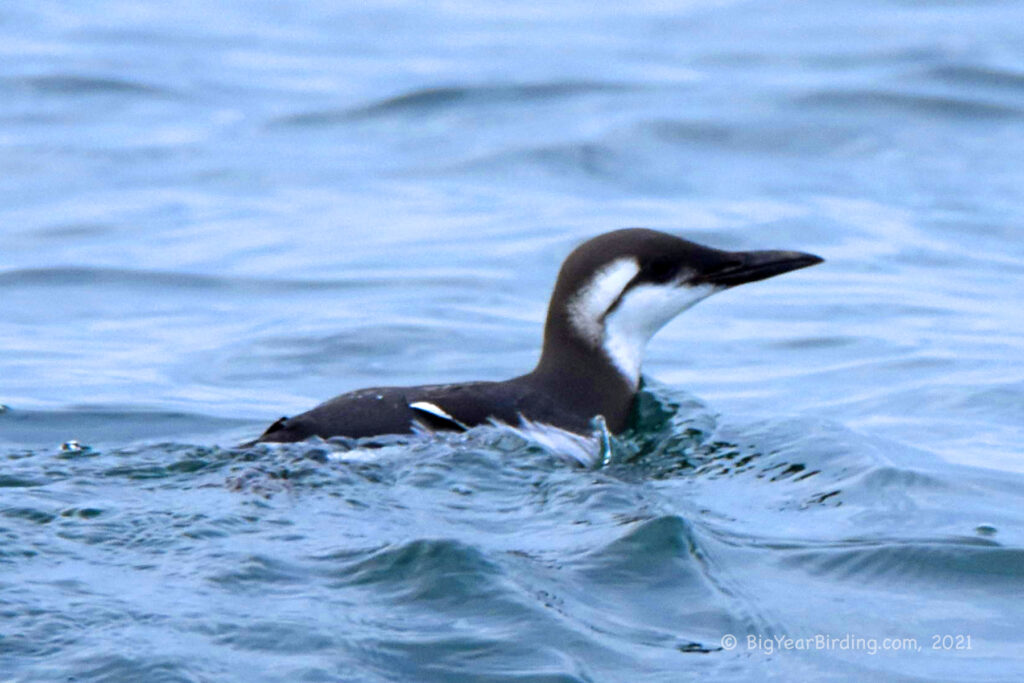
The Common Murre, also known as the Guillemot, is a large auk found in the northern hemisphere. Adults have a length of about 16-18 inches (40-46 cm) and a weight of 1-2 pounds (0.5-1 kg). They have a distinctive black and white plumage, with a black head, back, and wings, and a white belly. Their slender, pointed beak is black, and their feet are dark gray. During breeding season, the bill elongates and develops a white stripe on each side.

The Common Murre is a seabird that spends most of its time in the ocean, feeding on fish, krill, and squid. They are excellent divers and can reach depths of up to 600 feet (183 m) to catch their prey. They breed in large colonies on rocky cliffs and islands, with each pair laying one egg on a narrow ledge. The eggs are conical in shape, preventing them from rolling off the ledge. Incubation lasts about a month, and the chicks fledge after 4-6 weeks.
Common Murres are widely distributed across the northern hemisphere, with populations in the North Atlantic, the North Pacific, and the Arctic. They are migratory and travel to different areas to breed and feed. In the winter, they can be found as far south as California and the Mediterranean. In the summer, they return to their breeding colonies in the Arctic.
The Common Murre is a key species in marine ecosystems, and its decline has been linked to climate change and overfishing. Conservation efforts have focused on protecting their breeding habitats and reducing bycatch in commercial fishing operations. Birdwatchers and nature enthusiasts can observe these magnificent birds in their natural habitats, either from shore or on boat tours.

In conclusion, the Common Murre is a fascinating seabird with a striking black and white plumage, a slender, pointed beak, and excellent diving abilities. They are widely distributed across the northern hemisphere and are migratory, traveling to different areas to breed and feed. Conservation efforts are essential to ensure their continued survival and protect their vital role in marine ecosystems.

